Year 1, Lesson 1.2: Qualities of a Good Worker
Unit Learning Goal
Students will understand “good work” through excellence, ethics, and engagement.
Lesson Goal
Students will be able to articulate their personal views of “good work” by discussing examples of people they consider to be “good workers.”
Assessment
Review students’ written reflections about “good workers” for task comprehension.
Observe group discussions to ensure student understanding of the meaning of being a “good worker.”
Analyze Exit Tickets for suitable descriptions of qualities of “good workers.”
CASEL Alignment
Responsible Decision-Making
Portfolio Documentation
Qualities of a Good Worker Reflection Notes
Resources
List of classroom norms established in Lesson 1.1
Prerequisites
Lesson 1.1 - An Introduction to The Good Project Lesson Plans
Total Time
45 minutes
-
Share An Introduction to The Good Project Lesson Plans with the class to remind students about the purpose of these lessons (e.g., the way they learn to approach their work as students is a precursor to how they will approach their work as professionals, and this year is about learning the basics concepts of “good work” and how they each define these concepts for themselves).
Instructions
1. Opener: Revisiting Norms. [5 minutes]
Remind students of the norms that were set during introductory Lesson 1.1. Display the norms and read them aloud.
Ask students if they have any thoughts after consideration about what should be added or changed.
Share with students that we are ready to begin our exploration and reflection together.
From Meenakshi Iyer at Podar Education Network
2. An Example “Good Worker”. [10 minutes]
Ask each student to think of someone they believe exemplifies “good work.” Each student can choose their own individual.
The person could be someone the student knows personally (e.g., a family member, a friend, a person in their community) or a famous individual (e.g., a celebrity, a sports player, a historical figure). The person may be real or fictional. This person may be a person that students consider a role model or mentor.
Tell students that “work” does not need to be paid employment but can be any pursuit that the person is engaged in (for example, paid work, volunteer work, work that is completed as a hobby, work in the home, work in activism, etc.).
Note: Discourage students from asking for definitions of “good work”; part of this activity is unpacking students’ own preconceptions of what “good work” means.
With these individuals in mind, ask students to write a 1-2 paragraph reflection about this individual using the following prompts.
Who is this person?
What kind of work do they do?
Why do they exemplify good work?
If necessary, model this activity by describing one of your own examples of a “good worker” so students understand the task.
Once students have completed their reflection, have them spend a few moments circling the words or phrases in their reflection that highlight the qualities of the person that make them a “good worker.” (For example, these might be adjectives like “hard-working,” “thoughtful,” “kind,” etc.).
Keep the written reflection for the Good Work portfolio.
-
“I started the lesson a bit differently. We first went about deconstructing the words, "good" and "work". This set us up well for the next task which was of identifying someone who exemplifies good work. Much of the subsequent discussions went ahead smoothly.”
- Educator from The Good Project Community of Practice
-
“I think this lesson was appropriate to get students familiar with the concept of "good work" based on a role model that they know. Emotions came up when students were writing about them, and I was able to see how some of them admire their relatives, like parents or siblings. “
- Educator from The Good Project Community of Practice
3. Turn-and-Talk. [5 minutes]
Have students turn to a peer and discuss their examples of good workers. They should share their written reflections with one another.
Ask students to pay attention to areas where their own viewpoints might be the same or different from their partner.
-
When placing students in small groups, make an effort to regularly mix up the groups.
Students report greater learning when grouped with peers with whom they don't normally interact.
4. Full-Group Brainstorm. [20 minutes]
Ask for one or two students to volunteer by talking about their example in front of the whole class.
Create a visible space (e.g., white board, giant post-its, blackboard, etc.) in the room or digitally where you can collect students’ descriptors of good work. Ask students to contribute their descriptors or adjectives that they believe characterize their good workers.
Some further examples might be words like “honest,” “visionary,” “caring,” or “creative.”
Continue until a list of at least a dozen qualities are generated.
Look at the list of qualities together and talk about prevalent themes.
Try to make clusters of words that might be similar to one another.
Highlight any areas where students might disagree.
Tell students that they will be returning to this list at the beginning of the next lesson.
-
“It was a vibrant class where the majority of the students participated. I was happy to see the shy ones taking part in the discussion. They were extremely happy to know that they shall not be judged for their responses. (There is no right or wrong.)” - Educator from The Good Project Community of Practice
4. Closing and Exit Ticket. [5 minutes]
Ask students to complete the Lesson 1.2 Exit Ticket.
Students will respond to the question “What characteristics of the “good worker” who you chose for today’s activity do you most want to emulate in your own life, and how?”
Keep the written reflection for the Good Work Portfolio.
Lesson Walkthrough
Watch this short video guide for lesson specific advice from The Good Project Research Team.





